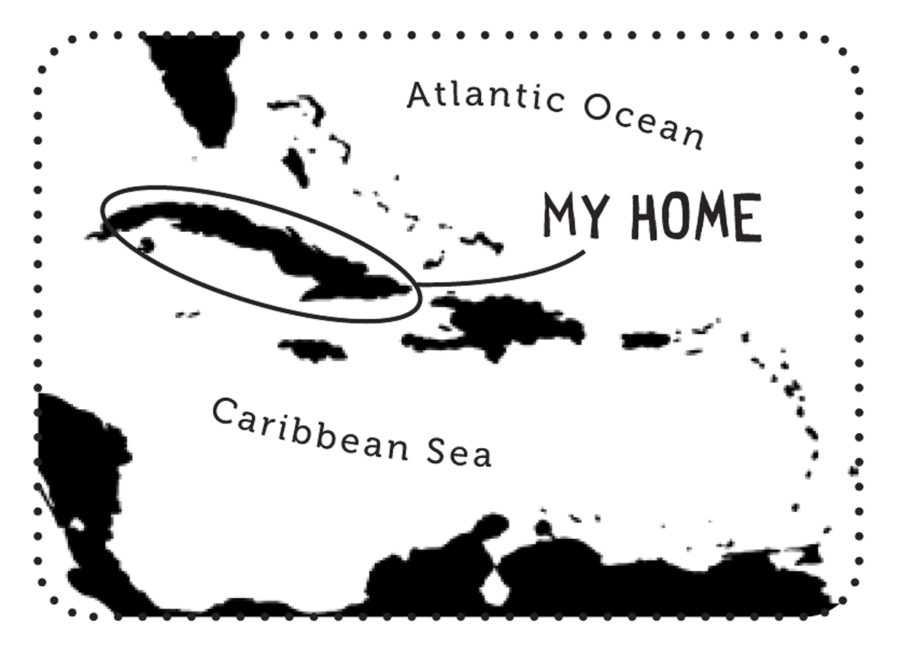Celebrate the Caribbean Endemic Bird Festival (CEBF) with us in our virtual “From the Nest” edition! Have fun learning about a new endemic bird every day. We have colouring pages, puzzles, activities, and more. Download for free and enjoy nature with your family at home.
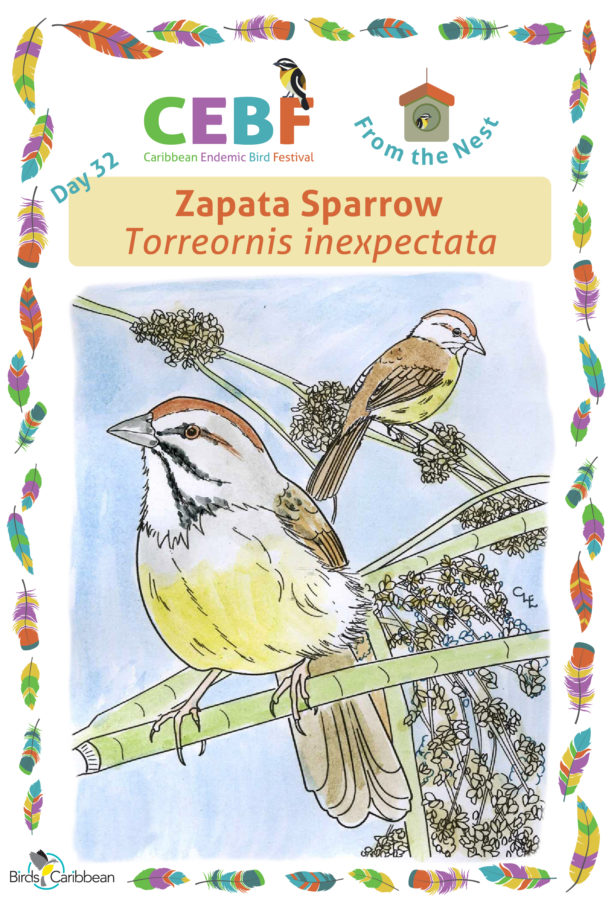
Endemic Bird of the Day: Zapata Sparrow
The Zapata Sparrow (in Cuba: Cabrerito de la Ciénaga) is one of three endemic Cuban birds discovered in 1926 by the Spanish naturalist, Fermín Zanón Cervera. Apparently it had a much wider distribution in the past but now just three small populations persist in three widely separated areas. They are each considered different subspecies belonging to endemic genus Torreornis. The earliest known population was discovered by Cervera in the Zapata Swamp. A second population was found in the Guantanamo province in southeast Cuba in the 1950s. The third population was finally discovered in the Cayo Coco Cays on the north coast in the 1970s.
Zapata Sparrows are plump sparrows with yellow underparts, a white throat, and a dark mustache stripe. The crown is dark reddish-brown and upperparts are olive-gray. The Zapata and Cayo Coco races are quite similar, with bright colors. The race from the coastal area east of Guantánamo is duller with the crown almost gray. The three races live in quite different habitats. In the Zapata Swamp they live in sawgrass prairie that is flooded about half the year. In Cayo Coco, they inhabit coastal scrub and low forest, and in Baitiquirí (Guantánamo) they live in low thorn scrub with cacti and scattered trees (this is the most arid part of Cuba).
Zapata Sparrows are usually seen in pairs, sometimes accompanied by a third individual. They are weak fliers due to having short and rounded wings. Pairs appear to defend a territory year-round. During the dry season they feed primarily on seeds, fruits, and flowers, but in the wet season they expand their diet to include animal matter such as insects, caterpillars, moths, spiders, snail eggs, and even small lizards. They nest from April to June, and lay two eggs in a cup shaped nest, usually less than one meter from the ground.
Because of their small ranges and population sizes, all three races are vulnerable to natural threats like hurricanes, and human-caused impacts such as ongoing habitat loss and degradation. The Zapata Sparrow is listed as Endangered by the IUCN. Special care must be taken to ensure that the habitat in the 3 areas where it occurs is not damaged or developed. Learn more about this species, including its range, photos, and calls here.
Colour in the Zapata Sparrow!
Download the page from Endemic Birds of the West Indies Colouring Book. Use the drawing above or photo below as your guide, or you can look up pictures of the bird online or in a bird field guide if you have one. Share your coloured-in page with us by posting it online and tagging us @BirdsCaribbean #CEBFfromthenest
Listen to the call of the Zapata Sparrow
The Zapata Sparrow’s typical call is a high-pitched metallic trill tziii-tzziii-tzziii repeated at intervals while the pair forages.
Puzzle of the Day
Click on the image below to do the puzzle. You can make the puzzle as easy or as hard as you like – for example, 6, 8, or 12 pieces for young children, all the way up to 1,024 pieces for those that are up for a challenge!
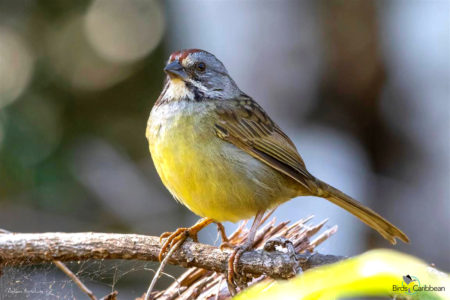
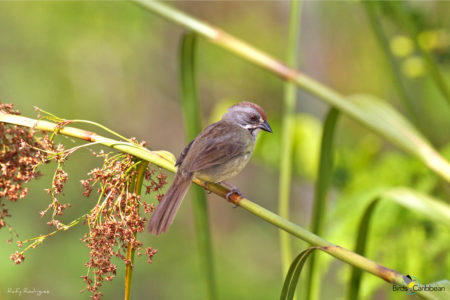
Activity of the Day
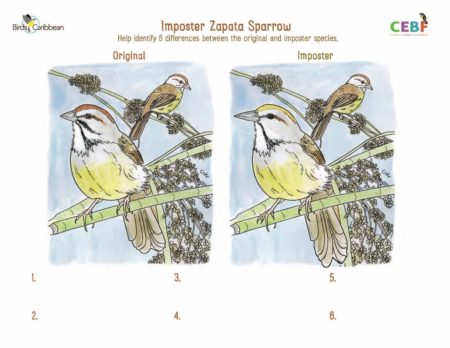 FOR KIDS: Help! There are reports of an imposter Zapata Sparrow! Can you spot the differences between the original and the imposter sparrow? There are 6 differences to find. After writing in your answers, check the Answer Key to see if you got them all correct.
FOR KIDS: Help! There are reports of an imposter Zapata Sparrow! Can you spot the differences between the original and the imposter sparrow? There are 6 differences to find. After writing in your answers, check the Answer Key to see if you got them all correct.
FOR KIDS AND ADULTS:
A lovely video of the handsome Zapata Sparrow, perched on a branch during a windy day in the Zapata Swamp. The bird turns once so that we get a great view of its front and back:

